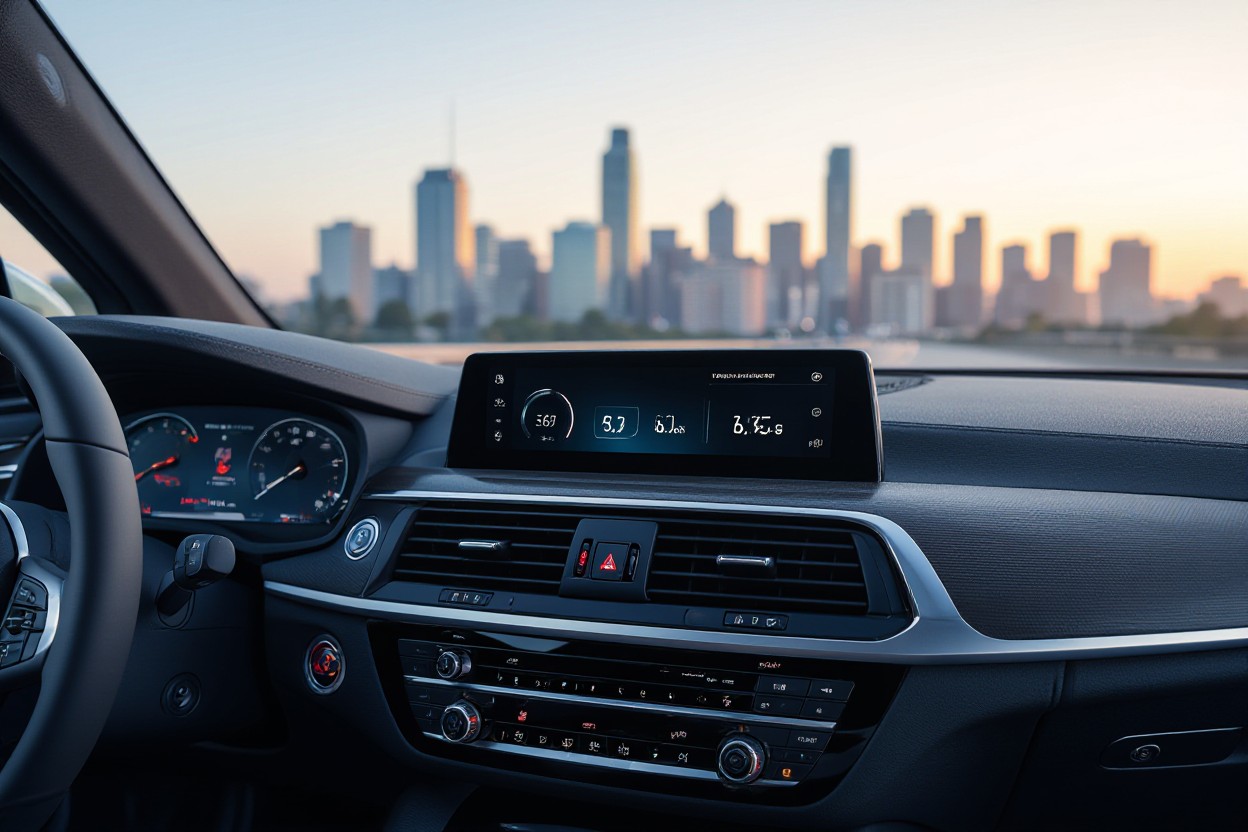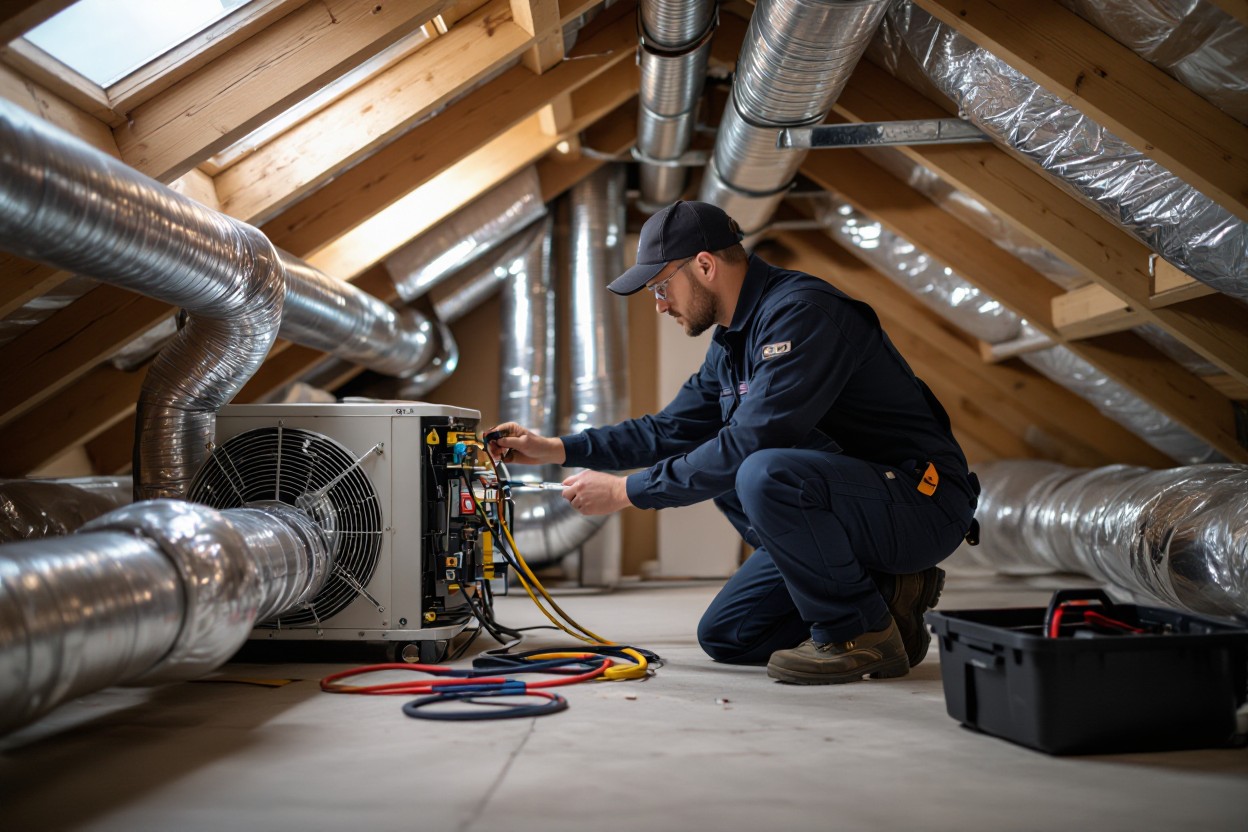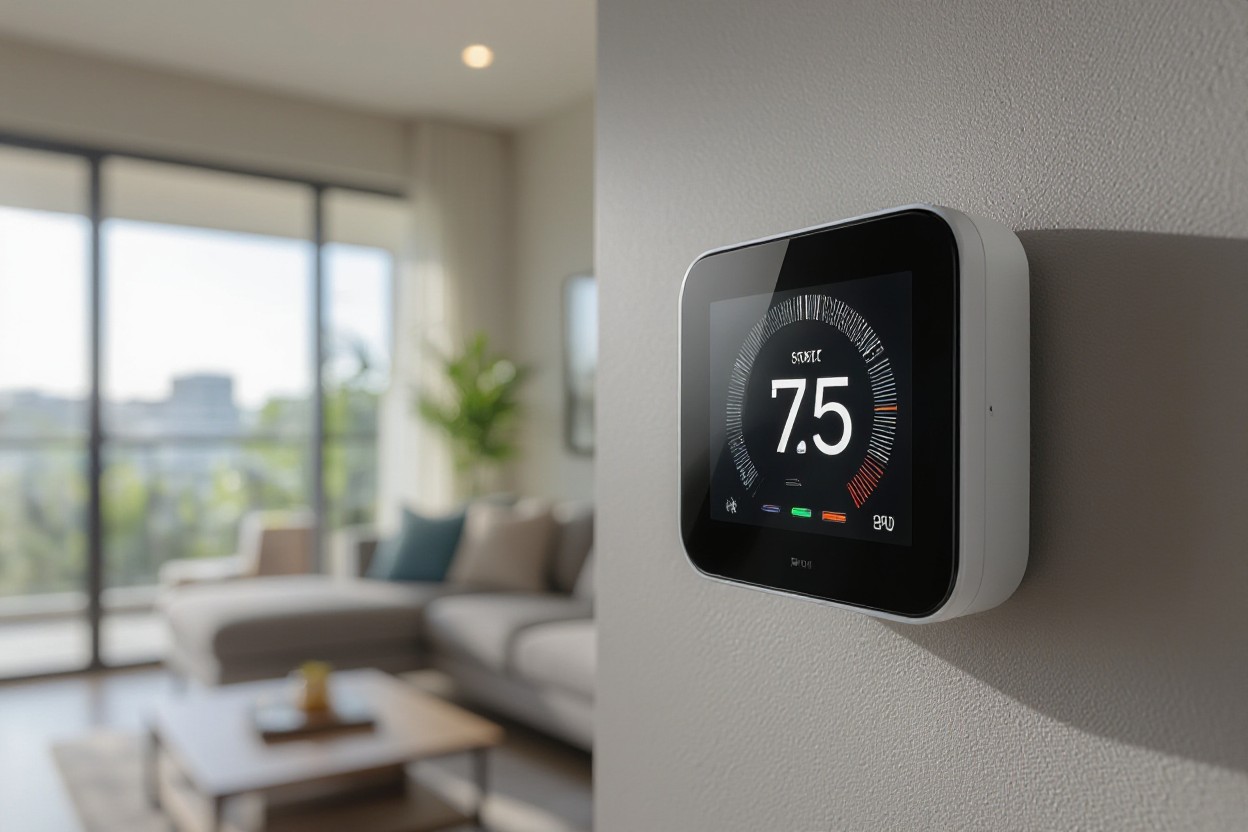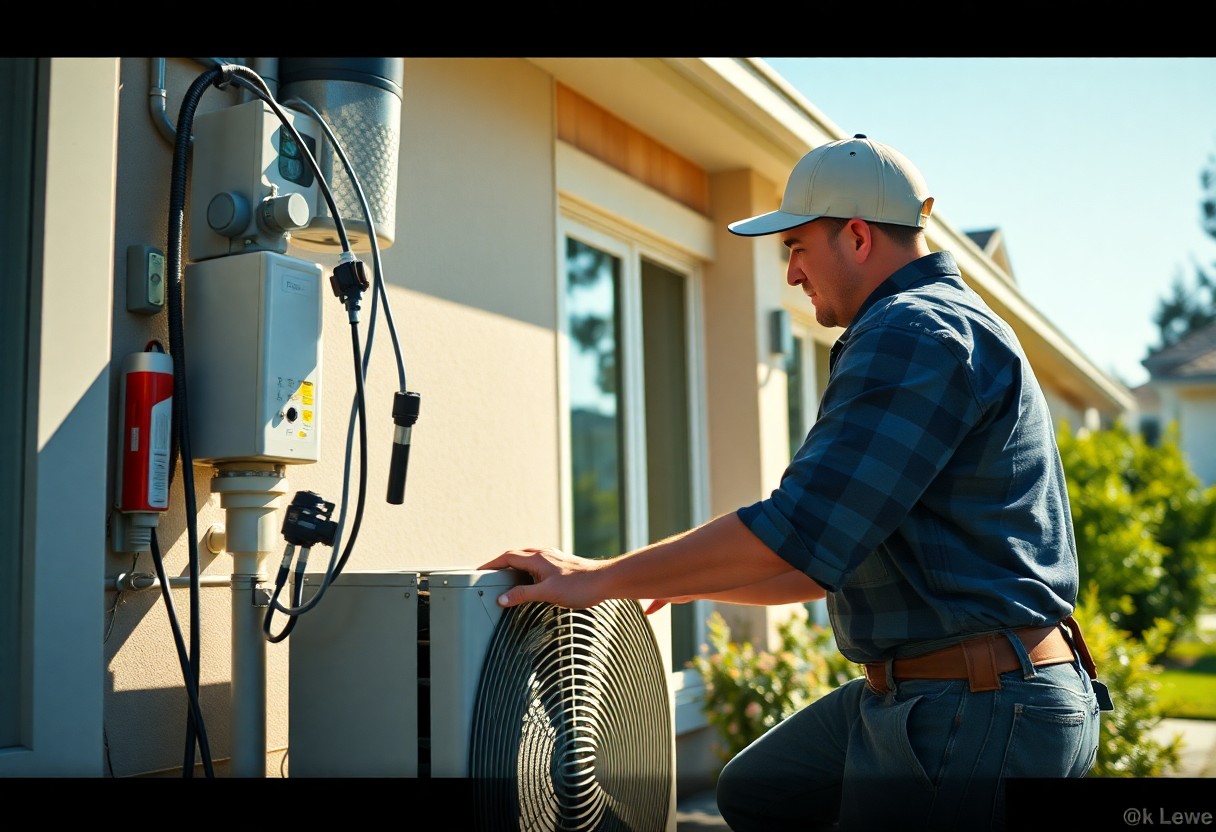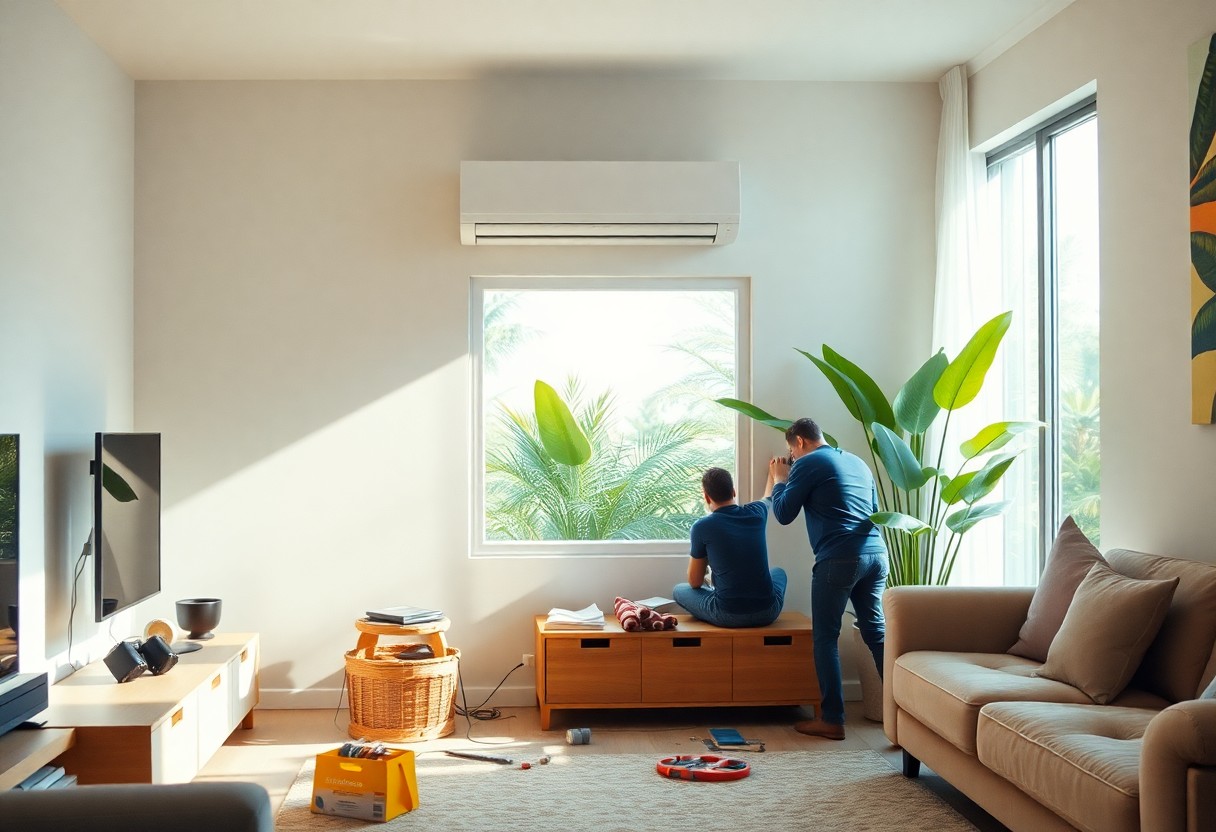Just choosing the right air conditioning system can make a significant difference in your comfort and energy bills. In Mount Gravatt, you need to consider factors like energy efficiency, unit size, and installation quality to get the best value for your investment. Whether you're upgrading an old system or installing a new one, understanding local conditions and available options will help you make smarter decisions that suit your home and budget. This guide breaks down everything you should keep in mind for a successful air conditioning installation in your area.
Key Takeaways:
- Top energy-efficient HVAC brands in 2025 include Carrier, Lennox, Daikin, Trane, and Mitsubishi, offering a range of high SEER-rated models suitable for Mount Gravatt homes.
- Unique building layouts in Mount Gravatt may require customized ductwork or multi-zone mini-split systems to optimize cooling efficiency and comfort.
- Proper unit sizing through a professional Manual J load calculation ensures efficient operation and prevents issues related to oversized or undersized air conditioners.
- Installation considerations such as adequate outdoor unit placement and use of smart thermostats can enhance system performance in homes with limited space or complex layouts.
- Brisbane homeowners, including those in Mount Gravatt, may qualify for government rebates when installing energy-efficient HVAC systems, helping to reduce upfront costs.
Identifying the ROI of Energy-Efficient HVAC Systems
You can expect significant returns from investing in energy-efficient HVAC units, especially from brands like Carrier or Lennox with SEER ratings above 25. Higher upfront costs often translate into lower electricity bills, reduced maintenance, and longer system lifespans, making the payback period typically between 3 to 7 years depending on usage. In Mount Gravatt's climate, pairing a smart inverter model with proper installation yields the best balance of comfort and cost savings.
Evaluating Long-Term Savings vs. Initial Costs
While premium models with SEER ratings above 25 may cost 20-30% more upfront than budget units, their improved efficiency cuts your energy expenses by up to 40%. Factoring in potential rebates and reduced repair frequencies shifts the overall expense in your favor. An efficient unit sized correctly for your home lowers wear and extends operational life, helping you avoid early replacement costs.
The Role of Energy Efficiency Ratings in Cost Analysis
Energy efficiency ratings like SEER and EER provide a measurable benchmark for comparing air conditioners. You'll find that models with SEER above 23, like Daikin's DX20VC or Lennox SL28XCV, consistently reduce monthly power bills. Evaluating a system's rating helps quantify long-term operating costs beyond the sticker price, directly impacting your return on investment.
SEER (Seasonal Energy Efficiency Ratio) reflects a unit's efficiency over a cooling season, factoring in variable temperatures and usage patterns, whereas EER (Energy Efficiency Ratio) measures efficiency at peak conditions. A higher SEER means the system uses less electricity for the cooling output. For example, upgrading from a SEER 14 unit to a SEER 26 model can halve your energy consumption during the cooling season. When assessing bids, scrutinizing these ratings alongside warranty terms and features, such as inverter technology and smart thermostats, ensures you're not just paying more upfront but securing true value over your system's lifecycle.

Navigating Mount Gravatt's Unique Architectural Challenges
The diverse range of homes in Mount Gravatt often presents unusual layouts and structural quirks that affect air conditioning installations. Many residences feature irregular room shapes and limited outdoor space, which can complicate classic HVAC placement and duct routing. Selecting systems like multi-zone mini-splits or compact units allows you to overcome these spatial restrictions efficiently. Ensuring adequate airflow around outdoor units is equally vital to maintain performance, especially in more compact yards. Tailoring your setup to these unique architectural factors ensures optimal comfort without compromising on energy efficiency or aesthetic appeal.
Tailoring HVAC Solutions for Irregular Building Layouts
Homes with odd-shaped rooms or multiple zones benefit from customized HVAC solutions, such as installing several smaller mini-split units rather than one large central system. This approach adapts cooling to each area's specific needs without unnecessary energy waste. Custom ductwork might also be required to navigate around architectural features like bay windows or angled walls. Proper zoning combined with smart thermostats can balance airflow and temperature control, especially in multi-level or segmented floorplans common in Mount Gravatt.
Overcoming Common Installation Hurdles in Older Homes
Older Mount Gravatt homes often come with outdated electrical systems that may not support high-efficiency HVAC units without upgrading. Limited wall cavity space and insulation challenges can restrict duct installation options, pushing installers toward ductless systems. Roof and wall structures in these homes might need reinforcement to accommodate modern outdoor units, while ensuring that tools used on fragile materials minimize damage. Addressing these issues upfront helps avoid costly redesigns during installation.
In many cases, your older home may require a thorough electrical load assessment before installation, particularly if circuit breakers are below 100 amps or wiring is decades old. Upgrading to a dedicated circuit for your new AC unit ensures safe, uninterrupted operation and prevents overloads. Additionally, improving attic insulation and sealing gaps around windows reduces the cooling demand, allowing smaller, more energy-efficient units to perform better. Coordination between licensed electricians and HVAC professionals is vital to navigate these modifications smoothly and maintain compliance with local building codes.
Mastering Unit Sizing for Optimal Performance
Getting your air conditioning unit sized just right impacts comfort and energy costs alike. A system matched to your home's layout, insulation, and occupancy keeps running efficiently without frequent cycling or constant overworking. Units with a SEER rating reflecting your climate—around 20 to 28 for Mount Gravatt homes—make the most of energy savings, especially when combined with accurate capacity sizing in BTUs. Striking that balance extends equipment life while delivering steady, even cooling through every room.
Conducting Professional Load Calculations
Load calculations using Manual J standards evaluate your home's specifics: square footage, ceiling height, window type and orientation, insulation, and typical occupancy levels. These calculations quantify exact cooling needs in BTUs, avoiding guesswork. Technicians factor in heat gains from sunlight and electronics, plus moisture levels, ensuring your unit neither strains nor idles. Engaging a qualified HVAC pro for this step guarantees your system matches Mount Gravatt's climate nuances and building quirks precisely.
Avoiding Common Sizing Mistakes That Cost You Money
Sizing errors waste energy and degrade comfort—oversized units short-cycle, hiking your electric bills and failing to remove humidity, while undersized ones run non-stop, wearing out prematurely and leaving rooms insufficiently cooled. For example, an AC rated too high for a 1500 sq ft home can cycle every 10 minutes, dropping efficiency by up to 20%. Meanwhile, undersizing by even 15% can cause inadequate cooling and constant operation that spikes maintenance costs.
Many homeowners default to estimating 20 BTU per square foot but overlook variables like ceiling height and insulation quality that shift cooling demands substantially. Rooms with large west-facing windows may require units sized 10–15% larger to compensate for solar heat gain. Additionally, ignoring occupancy patterns—such as frequent gatherings—can lead to undersized units struggling during peak loads. Clearing these pitfalls by incorporating detailed load calculations and factoring Mount Gravatt's occasional high humidity safeguards both your budget and comfort long term.
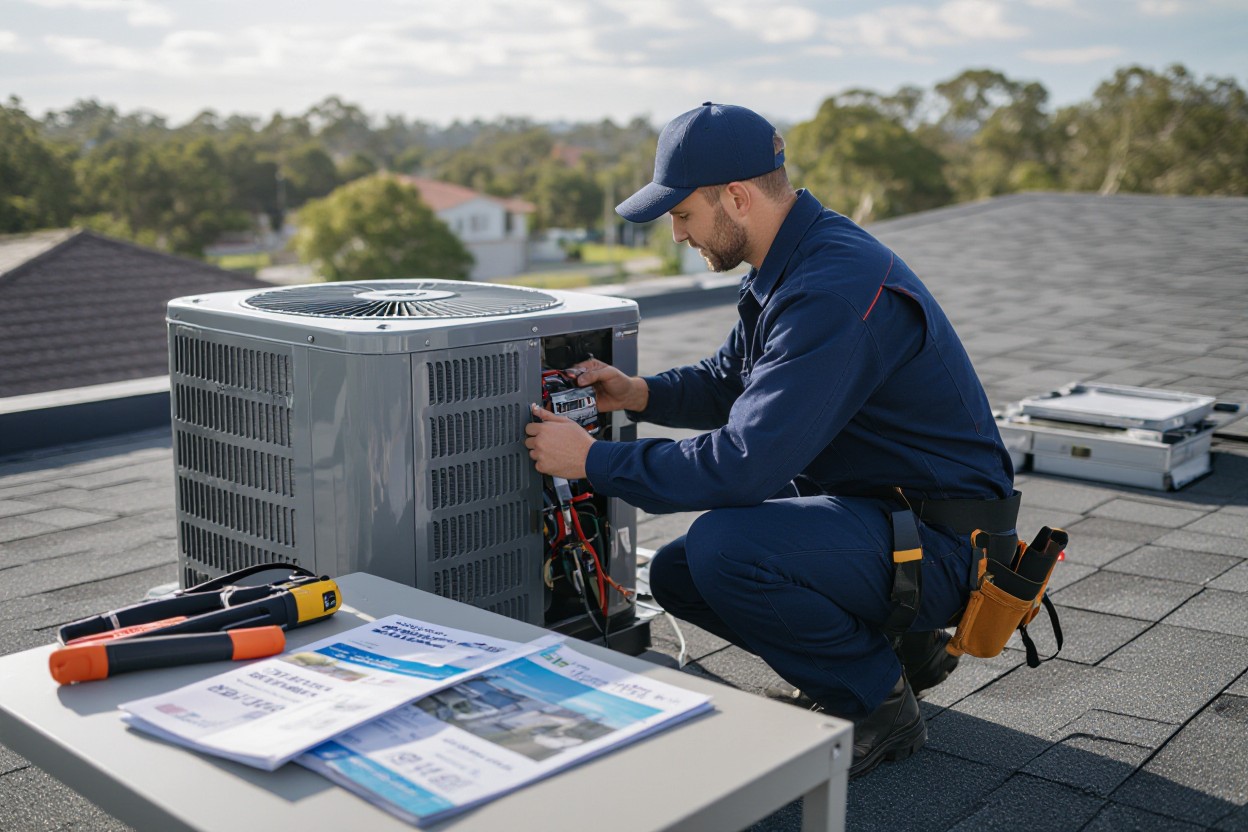
Leveraging Government Incentives for Affordable Installations
Accessing government incentives can significantly lower the upfront cost of installing an energy-efficient air conditioning system in Mount Gravatt. Queensland and federal programs often reward upgrades that boost home energy performance or reduce emissions. Taking advantage of rebates linked to high-SEER units like the Lennox SL28XCV or Daikin DX20VC not only cuts installation expenses but also promotes long-term savings on energy bills. Staying informed about evolving incentive schemes can make your investment more affordable and environmentally friendly.
Overview of Available Rebates and Grants in Brisbane
Brisbane homeowners qualify for various rebates targeting energy-efficient HVAC installations, including state-level schemes from the Queensland Department of Energy and federal rebates administered via the Clean Energy Regulator. Programs typically fund systems that meet ENERGY STAR or equivalent high-efficiency standards, with payouts depending on the unit's SEER rating or greenhouse gas reduction potential. Some initiatives also offer assistance for upgrading electrical infrastructure alongside new installations, helping to streamline complex retrofits.
Steps to Maximize Your Eligibility for Financial Assistance
Applying for rebates often requires submitting detailed documentation such as proof of purchase, installation reports, and proof of compliance with efficiency standards. Working with certified installers familiar with rebate criteria increases approval chances. Ensuring your air conditioner's specifications align with program requirements—such as minimum SEER ratings or inverter technology—can also unlock higher rebate tiers. Timely applications, sometimes before installation, help avoid delays or missed opportunities.
Diving deeper, you should first verify eligibility by reviewing criteria published by Queensland's Department of Energy and the Australian Government's Clean Energy Regulator. Collaborate with an accredited HVAC professional who understands these programs and can certify your equipment meets technical benchmarks. Collect all necessary invoices, energy rating labels, and compliance certificates during purchase and installation. Many rebates also require property proof or occupancy details, so prepare documents like rates notices or utility bills. Submitting applications digitally through official portals expedites processing, and tracking your submission with follow-ups ensures you don't miss critical deadlines. Coordination like this maximizes your chances to secure full financial benefits.
Essential Maintenance Practices for Longevity and Efficiency
Proper upkeep keeps your air conditioning system operating efficiently and extends its lifespan well beyond the warranty period. Regular maintenance not only preserves high SEER ratings of top models like Carrier's Infinity 26 or Lennox's SL28XCV but also prevents performance drops caused by neglect. Simple tasks such as timely filter changes and coil cleanings reduce energy consumption by up to 15%, helping you avoid costly repairs. Thou should establish a seasonal maintenance routine tailored to your specific unit type and local conditions in Mount Gravatt to maximise comfort and system durability.
Routine Care Tips to Keep Your System Running Smoothly
Simple daily and monthly tasks make a big difference in HVAC performance:
- Check and replace or clean air filters every 1-3 months to improve airflow and indoor air quality.
- Clear debris, leaves, and dust around outdoor units to ensure unobstructed airflow.
- Inspect condenser coils annually for dirt build-up; clean if necessary to maintain heat exchange efficiency.
- Confirm thermostat settings align with seasonal needs and consider upgrading to smart thermostats for precise control.
Thou should also keep vents unblocked and schedule annual professional inspections to catch issues early.
Recognizing Signs That Your HVAC System Needs Professional Attention
If you notice unusual noises like rattling, buzzing, or banging coming from your unit, it can indicate mechanical problems needing a technician's expertise. Rising energy bills without increased usage also signal declining efficiency, possibly from refrigerant leaks or dirty components. Inconsistent cooling across rooms or constant cycling often point to improper sizing or failing parts. Ignoring these warning signs could accelerate system wear or lead to costly breakdowns. Prompt professional assessment helps maintain peak efficiency for units like Daikin's DX20VC or Trane's XV20i models.
Additional indicators include water leaks around indoor units, which may signal clogged drainage or frozen coils needing repair. Frequent short-cycling, where the system turns on and off rapidly, often stresses components and wastes energy. Reduced airflow combined with rising indoor humidity suggests blocked ducts or malfunctioning fans. Technicians use diagnostic tools during comprehensive check-ups to measure refrigerant levels, electrical connections, and airflow, ensuring your system sustains optimal SEER ratings and reliability. Addressing these symptoms early prevents unexpected failures and extends your AC's service life in Mount Gravatt's unique climate conditions.
Best Value Air Conditioning Installations in Mount Gravatt – What Locals Should Know
With this in mind, when selecting an air conditioning system for your Mount Gravatt home, you should prioritize energy efficiency, proper sizing, and the suitability for your unique building layout. Opting for trusted brands that balance reliability and cost-effectiveness will help you get the most value. Additionally, exploring government rebates available in Brisbane can significantly reduce your installation expenses. By focusing on these factors, you can ensure your investment delivers comfort and savings tailored to your home's specific needs.
FAQ
Q: Which air conditioning brands provide the best value for Mount Gravatt homeowners?
A: For residents of Mount Gravatt seeking good value, brands like Rheem Prestige Series and Friedrich Kühl+ Smart balance energy efficiency and affordability. Rheem offers units with SEER ratings around 20-20.5, suitable for typical homes, while Friedrich provides budget-friendly options with smart controls and low standby power. Goodman is another budget-conscious choice, though it may lack some premium features found in higher-end brands.
Q: What type of air conditioning system works best for homes with unique layouts in Mount Gravatt?
A: Homes in Mount Gravatt with irregular room shapes or older structures often benefit from mini-split or multi-zone systems. These setups allow targeted cooling in individual rooms, reduce ductwork complexity, and improve energy efficiency. Additionally, professional sizing and placement of indoor and outdoor units help optimize performance, especially in homes with limited external space.
Q: How should I determine the right size air conditioner for my Mount Gravatt home?
A: The correct size depends on factors like your home's square footage, ceiling height, insulation quality, window locations, and typical occupancy. A professional Manual J load calculation is the most accurate method to assess your cooling needs, often measured in BTUs. As a general guideline, approximately 20 BTUs per square foot might apply, but tailored calculations ensure better comfort and efficiency.
Q: Are there any government rebates available for energy-efficient air conditioning installations in Brisbane, including Mount Gravatt?
A: Yes, Brisbane homeowners may be eligible for rebates or incentives through Queensland state and Australian federal programs. Rebates often target installations of ENERGY STAR-rated or similarly efficient HVAC units, encouraging upgrades that reduce emissions and improve home energy performance. Checking the Queensland Department of Energy and the Australian Government's Clean Energy Regulator websites will provide current rebate options.
Q: What installation considerations should Mount Gravatt residents keep in mind for optimal air conditioner performance?
A: Professional load calculations are recommended to match system capacity to your home's requirements, especially with non-standard layouts. Outdoor units should be placed in shaded, well-ventilated areas with enough clearance for airflow. Using smart thermostats and zoning controls can help balance comfort and energy savings in multi-room setups. Additionally, updating electrical systems may be necessary for older homes to support modern HVAC equipment.
